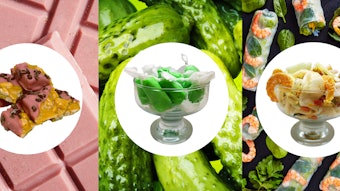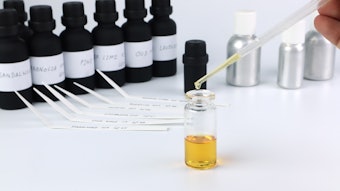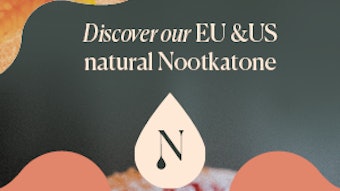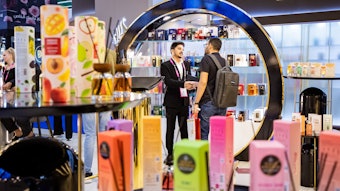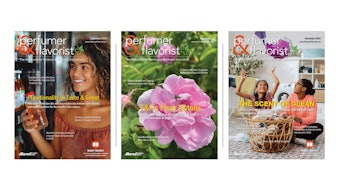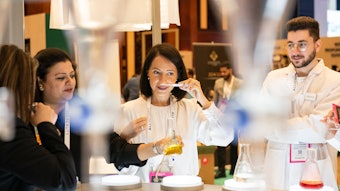While flavorings in the European Union currently fall under directive 88/388, established in 1988, this is set to change in 2008 with the adoption of FIAP (Food Improvement Agent Package). As Joy Hardinge (AJH Consulting) explained at the SAFC symposium in Grasse, France, the new legislation is presently being debated by the European Parliament and Council, and is expected to be adopted in 2008. A main difference between Directive 88/388 and FIAP is that the new legislation is a regulation and would therefore automatically become law. A directive, on the other hand, only becomes law once a member state brings it into its own legislation, which can take up to three years to complete.
Hardinge highlighted the main points set out in the proposed legislation along with some of the potential challenges. Directive 88/388 covers flavoring preparations, process flavorings, smoke flavorings and flavoring substances (including natural, nature identical and artificial). The new legislation has some significant changes in store, including extending the scope to embrace “certain food ingredients with flavoring properties.” Additionally, it will replace process flavorings with thermal process flavorings—those flavors obtained after heat treatment from a mixture of ingredients, not necessarily having flavoring properties themselves. One ingredient must contain amino nitrogen and one must be a reducing sugar.
The end of nature identical, artificial: Another key difference in the new legislation is that the nature identical and artificial categories of flavorings disappear. This could prove to be a difficult change for the industry, whichhas unsuccessfully lobbied to keep the categories.
New flavoring categories: The new proposal has two new categories of flavorings: precursor flavors and "other flavorings." A precursor flavor is defined as a product not necessarily with flavoring properties that is added to food for the purpose of producing flavoring by breaking down or reacting with other components during food processing. The other flavorings category is a catchall for any other flavoring that doesn’t fit into one of the other categories. Hardinge gave the example of grill flavors and rum ether.
Article seven of the proposed legislation states that flavoring preparations, thermal process flavorings and flavor precursors—providing they are from food sources and produced within the set guidelines—do not require evaluation and approval. Additionally, food ingredients with flavoring properties don’t need to be evaluated. On the other hand, flavoring substances, flavoring preparations and flavoring precursors from non-food need to be evaluated. Other flavorings and thermal process flavorings from non-food or outside the guidelines also need to be evaluated.
Ambiguity in rules: This is where the ambiguity begins. Whether or not a material needs evaluation depends to some extent on the definition of "food." This isn’t specifically defined, but recital 14 states that “material for which there is significant evidence of flavor use is considered food even if the source has never been used for food and does not need to be evaluated.” Hardinge explained that using this definition, rosewood and strawberry leaves would not need to be evaluated or approved.
There is more uncertainty when it comes to articles 12–14 on business-to-business labeling. The requirements are somewhat similar to existing ones; however, the definition of "natural" has caused some concern. According to the proposed legislation, the term "natural" may only be used in a sales description if the flavoring is made up of flavoring preparations and/or natural flavoring substances only. This means that process flavorings and smoke flavorings are never natural. Currently, a natural flavor has to be 100% natural, with 90% coming from the food it is intended to taste like, and 10% from another food source. Both the Parliament and Council wish to change this, but they haven’t seen eye-to-eye on what it should be. Parliament proposes it change to 95-5, while Council believes it should stay 90-10, but that the 10% can’t taste of what the 90% is. (This is of particular interest, for example, in vanilla flavors.)
The proposed legislation has added the WONF (With Other Natural Flavors) category for the first time in the EU. This says that “natural X flavoring with other natural flavorings has to contain enough X to be easily recognizable.” Once again, the term "easily recognizable" is left open to interpretation.
The term "natural flavoring" can only be used if the flavoring component is derived from different source materials and where a reference to the source materials would not reflect their flavor or taste. Hardinge’s example of this was a BBQ flavoring.
A major challenge for the industry appears in Articles 16 and 17, in which the EU would require food business operators to report to the Commission the annual amounts of flavoring substances added to foods in the EU and the use levels for each food category. Hardinge explained that this is an impossible thing to ask of the industry, since companies purchasing flavors do not know how exactly they are made, and the flavor firm does not know how exactly their products are used in end products. Thankfully, Hardinge is hopeful this will change.
Overall, Hardinge expressed that it has been a long and arduous journey for the proposed legislation, and although she is optimistic that it will finally be ready for adoption in 2008, it will still be another two years before the regulation would fully apply.
